Shinogi Explained: Anatomy and Characteristics of the Ridge Line
NO AI USED This Article has been written and edited by our team with no help of the AI
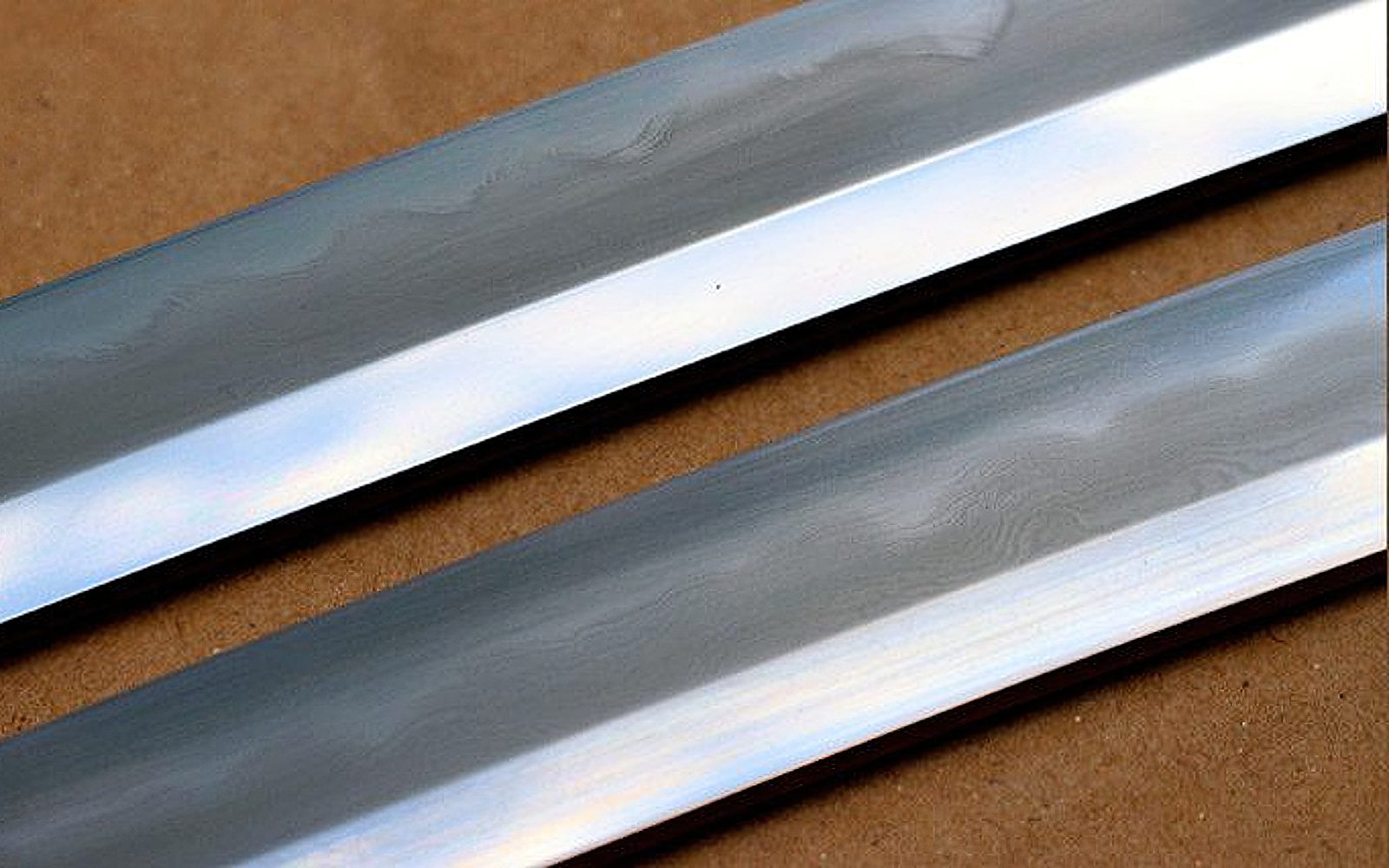
The shinogi, a defining feature of Japanese swords, is more than just a structural element—it’s a window into the artistry and history of swordmaking.
This prominent ridge line, running parallel to the cutting edge, not only contributes to the blade’s functionality but also holds secrets about its origin.
From its height to its placement, the shinogi can reveal when a blade was forged and which swordmaking school influenced its design.
Let’s uncover the significance of the shinogi and its role in understanding the craftsmanship behind Japanese swords.
Anatomy and Related Terminologies

• Shinogi (鎬) – The ridge lines on both sides of the blade, between the back (mune) and the cutting edge. It extends from the butt end of the tang (nakago-jiri) to the yokote (the line perpendicular to the cutting edge at the point).
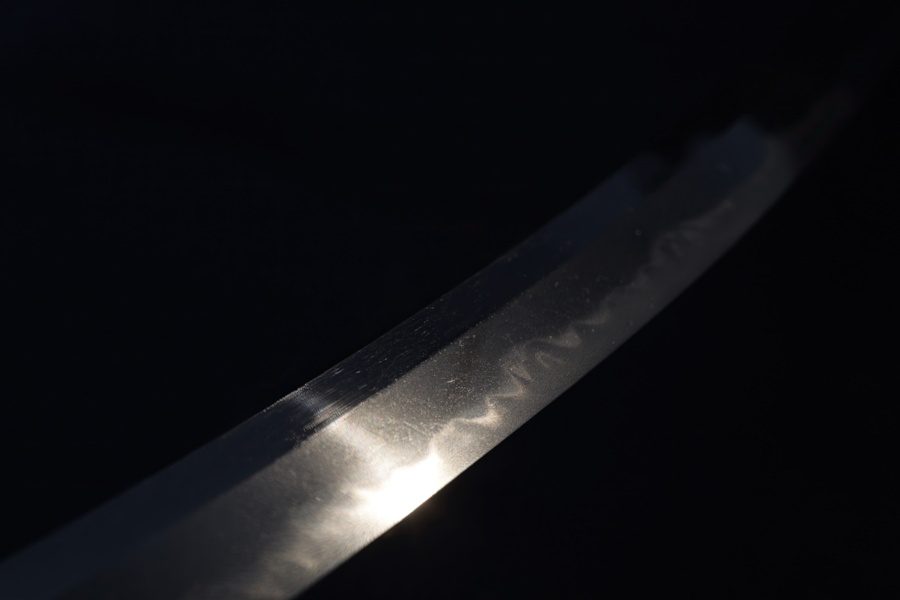
• Shinogi-ji (鎬地) – The flat surface of the blade between the shinogi and the mune (back).
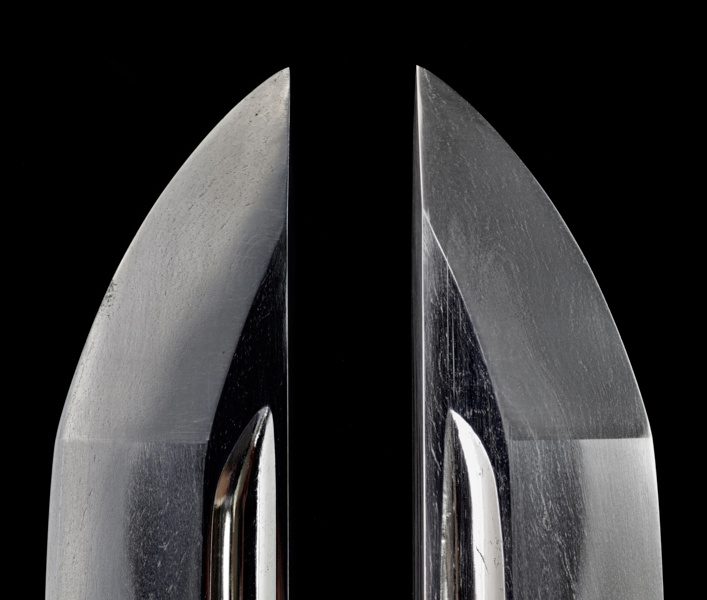
• Ko-shinogi (小鎬) – The continuation of the shinogi in the point area above the yokote, a diagonal line dividing the point area from the back of the blade.
• Shinogi mitsukado (鎬三ツ角) – The spot where the shinogi, ko-shinogi, and yokote lines meet.
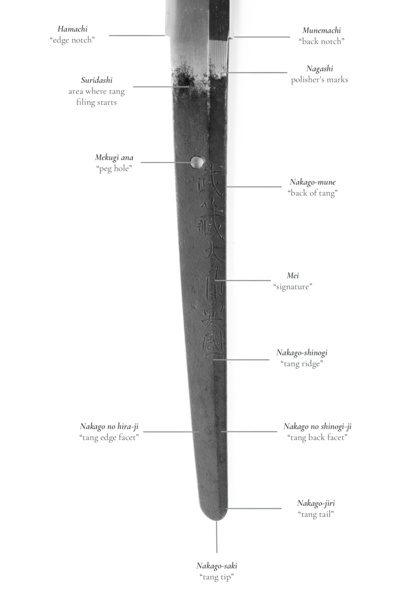
• Nakago shinogi – The continuation of the shinogi in the tang (nakago) of the blade.
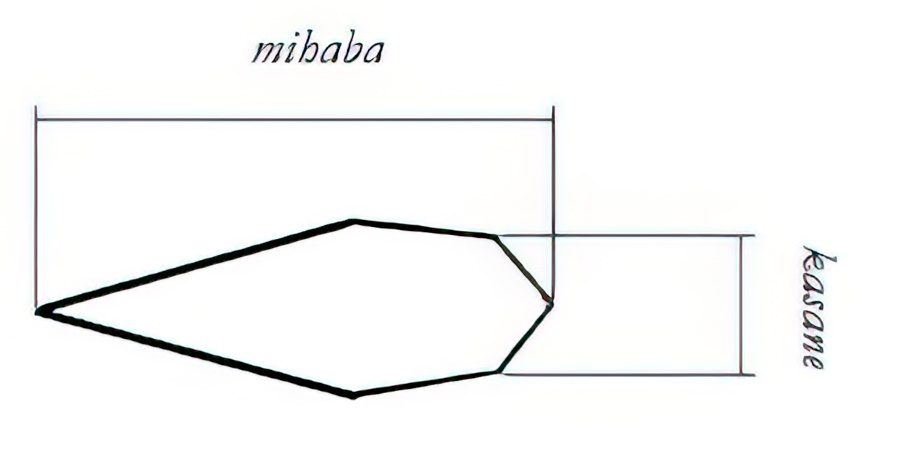
• Kasane – The thickness at the mune (back of the blade).
• Mihaba – The width of the blade from the back edge to the cutting edge.
The Height of the Shinogi
The height of the shinogi refers to the thickness of the blade from one side of the shinogi (ridge line) to the other. Generally, if the blade has a shinogi, the cross-section will be thickest where the ridge line is located. The difference in the thicknesses is described as either high or low.
High Shinogi
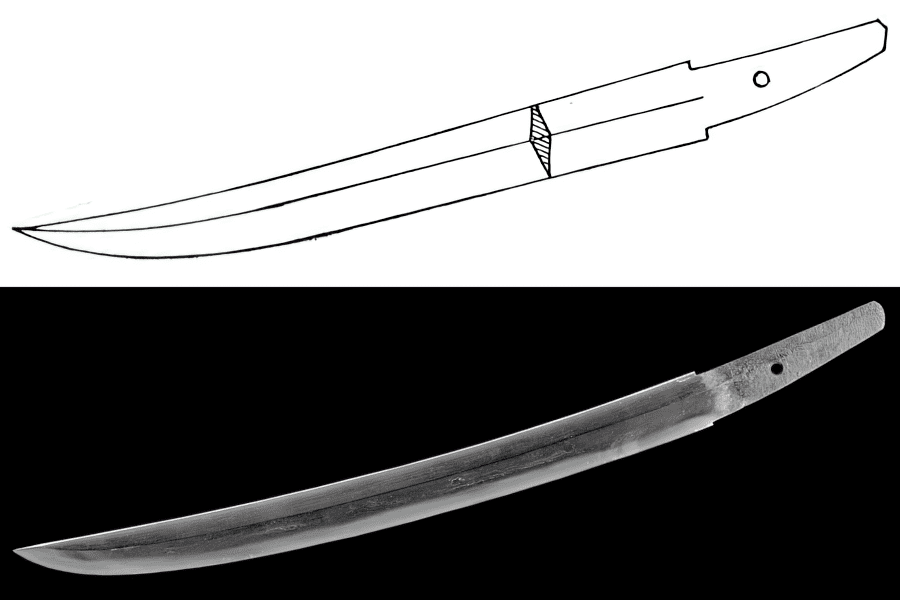
If the distance between the two ridge lines is relatively large, it is referred to as a high shinogi. Also, the cross-section of the blade is diamond-shaped. More than that, the distance between the ridge lines is noticeably wider in cross-section compared to the kasane—the width or thickness of the blade at the mune or back.
For instance, a blade may feature a high shinogi, but its actual kasane is thin. High shinogi is commonly found in blade constructions like shobu-zukuri, especially on wakizashi and tanto of the Muromachi period. It also appears on nagamaki, naginata, yari, and ken-style blades.
Low Shinogi
On the other hand, if the distance between the two ridge lines is relatively small, it is described as a low shinogi. In some cases, the shinogi is extremely low and virtually looks like the blade thins from the mune to the shinogi. Also, some blades feature a shinogi that appears to be lower or at the same level as the kasane.
The Shinogi in Various Blade Constructions
Japanese swords and daggers widely varied in blade constructions (tsukurikomi, 造込). Depending on the blade construction, a shinogi may be oriented towards the mune (back of the blade) or the cutting edge. However, the hira-zukuri, which is flat on both sides, lack a shinogi.
1. Shinogi Zukuri
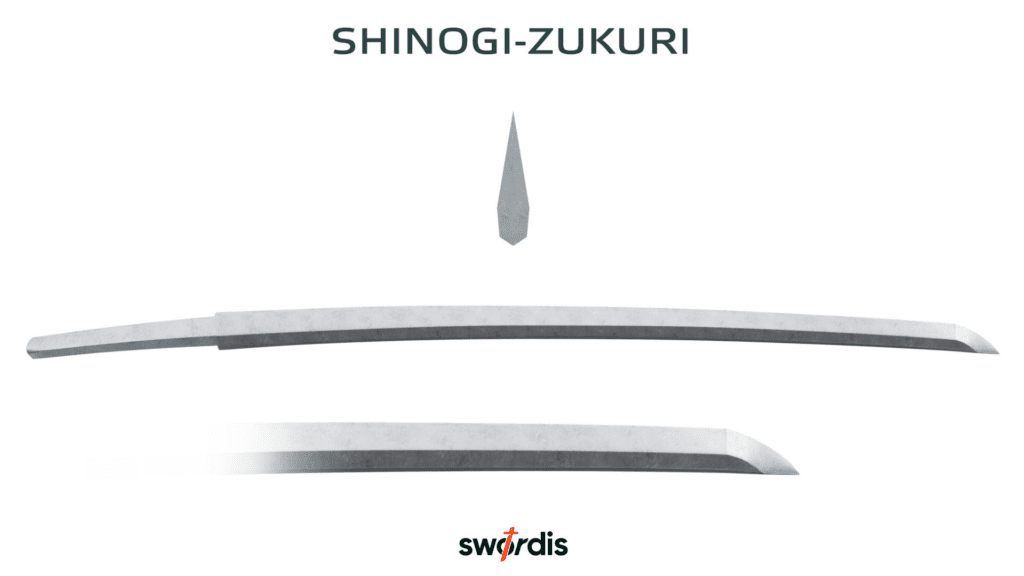
Also known as hon-zukuri (本造), the shinogi-zukuri (鎬造) is the most common blade construction found in Japanese swords, particularly in long swords. Its shinogi is positioned closer to the mune (back of the blade) than to the cutting edge, yokote, and ko-shinogi.
2. Kiriha Zukuri
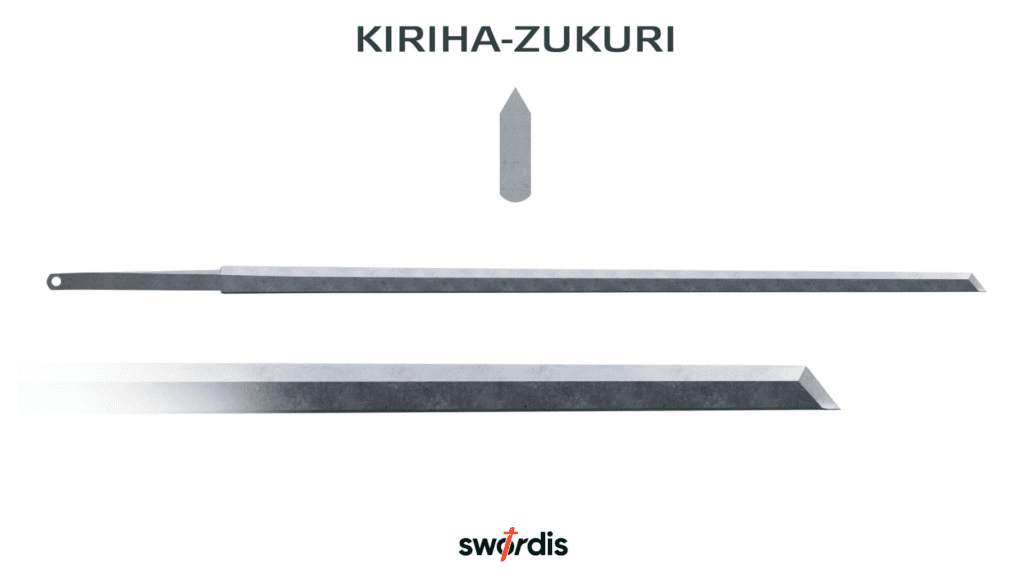
Also known as kiriba-zukuri (切刃造), a kiriha-zukuri features a shinogi that’s very close to the cutting edge. It can only be seen on ancient blades or later blade reproductions, as some swordsmiths of the Bakumatsu and Meiji eras experimented with the kiriha-zukuri shape.
3. Katakiriha Zukuri
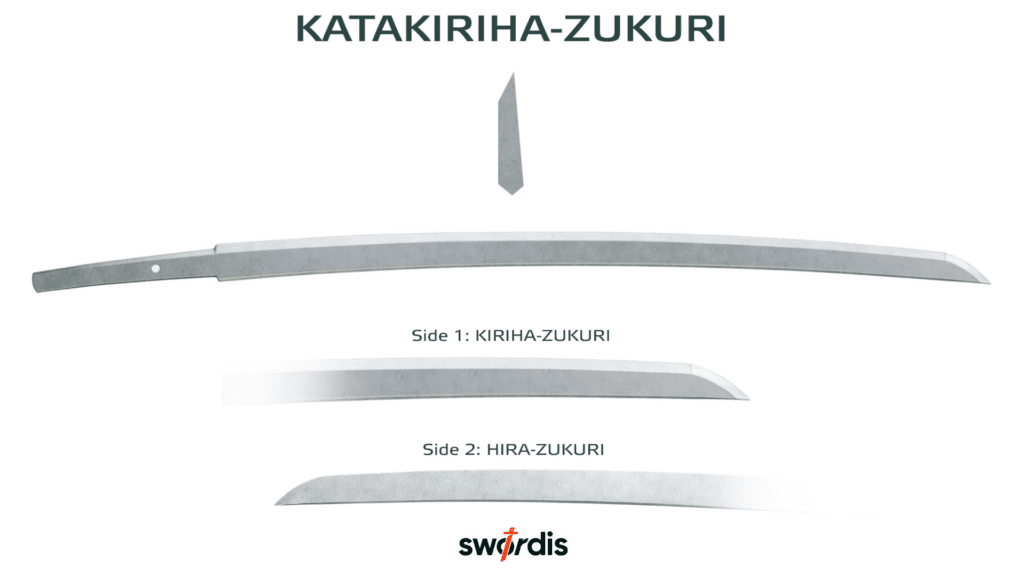
Also known as katakiriba-zukuri (片切刃造), the katakiriha-zukuri features a blade with a shinogi very close to the cutting edge on one side, while the other side remains flat. It emerged during the end of the Kamakura period and regained popularity during the Edo period.
4. Shobu Zukuri
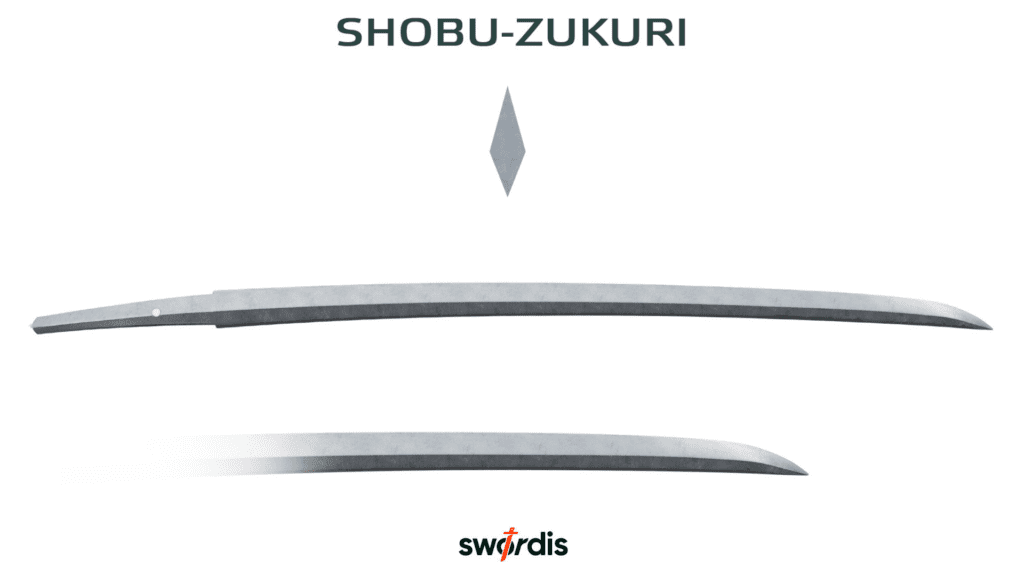
A shobu-zukuri (菖蒲造) is characterized by a blade with a shinogi that extends to the tip of the point area but lacks a yokote line. Its name is derived from its resemblance to a Japanese iris leaf (shobu).
5. Kanmuri Otoshi Zukuri
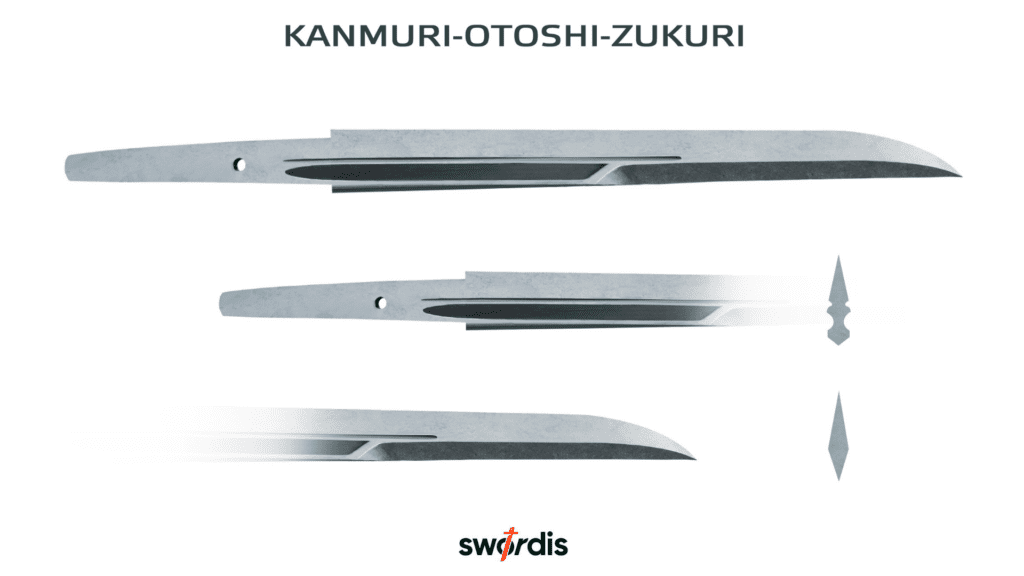
A kanmuri otoshi zukuri (冠落造) is a blade construction that combines the features of a shinogi-zukuri style on the lower half of the blade. Its distinctive characteristic lies in the diagonally cut shinogi-ji, reminiscent of a shobu-zukuri style. This construction can be found on swords crafted by Yamato swordsmiths and appeared during the Kamakura period.
Examining the Shinogi in Sword Appraisal
In Japanese sword appraisal, the shinogi, along with the shinogi-ji, is an important factor examined regarding a blade’s shape (sugata). It plays a crucial role in dating a blade, as the characteristic features of the shinogi and shinogi-ji often reveal insights into certain swordmaking traditions, production era, and individual swordsmiths.
Shinogi and the Associated Swordmaking Schools
Depending on the height of the shinogi which can be described as either high or low, one can gain an idea regarding the swordsmith, school, or traditions behind the blade.
Related swordmaking schools for a high shinogi: The Yamato and Yamato-related schools are notable representatives for blades with a high shinogi. These include the Uda, Mihara, Nio, Iruka, Tadasada, Kongobei, and the Naminohira schools. Additionally, the Sue-Bizen schools produced blades featuring a high shinogi. Examples of high shinogi can also be seen in the works of Shinto-era swordsmiths Nanki Shigekuni and Kunikane.
Related swordmaking schools for a low shinogi: The Bizen and Soshu schools were known for producing swords characterized with a low shinogi. This style is evident in blades crafted by the Ichimonji, Osafune, and Kozori schools. Notably, Shinto-era swordsmiths Tsuda Sukehiro and Omi no Kami Sukenao also produced swords with the shinogi appearing to be at the same level or lower than the kasane.
Shinogi-ji and the Associated Swordmaking Schools
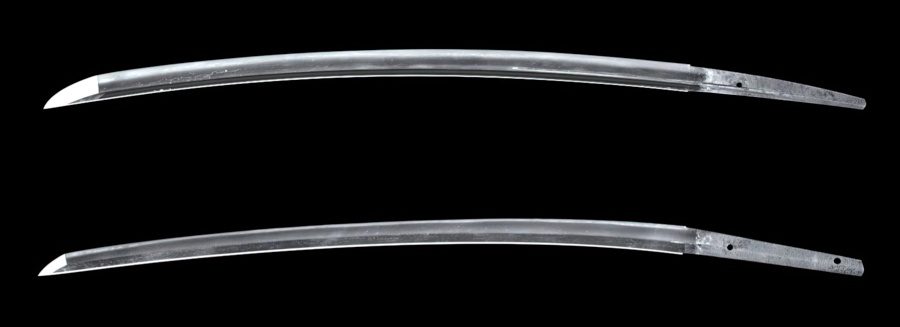
The shinogi-ji refers to the surface of the blade between the shinogi (ridge line) and the mune (back of the blade). The width of the shinogi-ji can be described as either narrow or wide.
Related swordmaking schools for a narrow shinogi-ji: The Soshu and Yamashiro swordsmiths were renowned for crafting blades characterized by a narrow shinogi-ji. The Awataguchi school also employed a narrow shinogi-ji in their works, along with swordsmiths Ko-Hoki Yasutsuna, Sekishu-mono, Hidemitsu, Masatsune, Sanetada, and Kotetsu.
Related swordmaking schools for a wide shinogi-ji: The Yamato and Yamato-related schools are recognized for crafting blades characterized by a wide shinogi-ji. Among the swordsmiths known for applying a wide shinogi-ji in their blades are Mino Kanetsugu, Kanesada, Aoe Masatsune, Kozori Tsuneie, and Osafune Mitsutada.
